Drive sales on autopilot with ecommerce-focused features
See FeaturesShopify's robust features make it an excellent platform not just for ecommerce, but also for selling services, subscriptions, and digital products seamlessly.
The Shopify App Store offers over 8,000 high-quality apps that enhance functionality for service businesses, from scheduling to marketing automation.
Setting up a service business on Shopify involves a straightforward process of account selection, adding services as products, and configuring essential pages and marketing automation.
Effective marketing strategies, particularly through email automation and segmentation, are crucial for maximizing customer engagement and retention in a service-based business on Shopify.
“Don’t use Shopify for services, it’s only for ecommerce.” You’ve probably heard that one. But the truth is, the same features that make Shopify great for ecommerce also make it perfect for selling services, subscriptions, digital downloads, or any mix of products and service packages.
Shopify handles payments, marketing, and client management better than WordPress and Wix out of the box. You’re able to build “products” as services, professional landing pages, and add an email marketing app for audience growth.
What started as a pure ecommerce platform is now suitable for selling services or even building informational B2B websites for lead generation.
This article is a complete roadmap for selling services on Shopify, including setup, costs, optimization, and marketing to help you decide if it’s right for your business.
Quick sign up | No credit card required
What makes Shopify ideal for selling services?
Shopify is a cohesive ecosystem for selling services, doing away with the plugins and cobbled-together approach other platforms require to build working paid services websites.
With Shopify, you can sign up, add a theme to your site, add products as services, activate payments, and start selling immediately. Even if you’re a complete beginner, the learning curve is practically non-existent across its standard features.
For instance, yoga instructors can take payments for bookings, and Shopify will automatically send confirmation emails with booking details to customers.
Or let’s take the example of a bookkeeper. They can package and sell subscriptions for Xero account management, win sales without pitching, and see their customers in their dashboard.
These scenarios are where selling on Shopify makes sense:
- Service packages and bundles
- Appointments
- Bookings
- Digital products and downloads
- Subscriptions and memberships
If you plan to package services and sell them, or otherwise take payments for services, you’ll get the functionality needed. Additionally, because Shopify provides hosting and payments, it’s secure by default and with global standards compliance.
That’s why Shopify is suitable for selling services, but its extensive App Store is what puts it ahead of the likes of WordPress, Wix, and Squarespace.
The Shopify App Store contains 8,000+ apps for every manner of functionality you need, from scheduling, booking, and managing appointments and services, to setting up recurring billing.
Highlights include Omnisend for email marketing automation, Judge.me for reviews, Apntly for calendar bookings, Sky Pilot for digital downloads, Recharge for subscriptions, and hundreds of additional apps competing with these.
Yes, other website platforms have plugins, but Shopify’s App Store has consistently high-quality apps, helping you create better customer experiences, build trust, and grow sales.
How to set up your service business on Shopify
Configuring your Shopify store, selecting a theme, and setting up your marketing channels properly the first time will save you time and provide a crash course in learning the basics.
Follow these five steps to sell services on Shopify:
Step 1: Account and plan selection

Head over to the Shopify pricing page and review its plans. The cheapest option is the Basic plan at $39/month or $29/month with an annual payment, and it’s probably all you need for now.
The Grow plan is the next step up, but it’s significantly more expensive at $105/month and only makes sense if you need up to five staff accounts.
Step 2: Adding services as products
After creating your account, you’ll have access to the Shopify dashboard. Look for the sidebar, and select Products to open the options:

The Products dashboard features a black button labeled “+ Add product.” Click it, and you’ll redirect to the product editor, which is where you’ll add a service:

You should fill out these sections:
- Title (add your service name)
- Description (add your service information)
- Media (add images)
- Price (include all necessary taxes)
- Inventory (deselect Inventory tracked)
- Shipping (deselect Physical product)
- Search engine listing (add a page title, meta, and optimal URL handle)
After adding your information, click Save. Want to preview your product? Click Preview (the button is next to Duplicate at the top) to see it:

Step 3: Checkout configuration
Shopify provides a standard checkout layout, and some of your checkout is now pre-configured following the deselection of Physical product and Inventory tracked in your product settings.
You can make additional checkout configurations by navigating to Settings in the sidebar (there’s a settings icon at the bottom) and selecting Checkout from the options:

The available settings include several preselections, and the types of changes you might want to make are subjective. Consider these changes when using Shopify for selling services:
- Requiring customers to sign in to their account before checkout (checkbox)
- Adding customer options for company name, shipping phone number, and address line two (checkbox)
- Show tipping options at checkout (checkbox)
- Marketing options, with Email preselected and SMS optional (you’ll need an SMS app if you want the SMS functionality to work)
Step 4: Essential pages and policies
Navigate to Online store under Sales channels in the sidebar and select Pages to view all your published pages. By default, Shopify provides these pages:
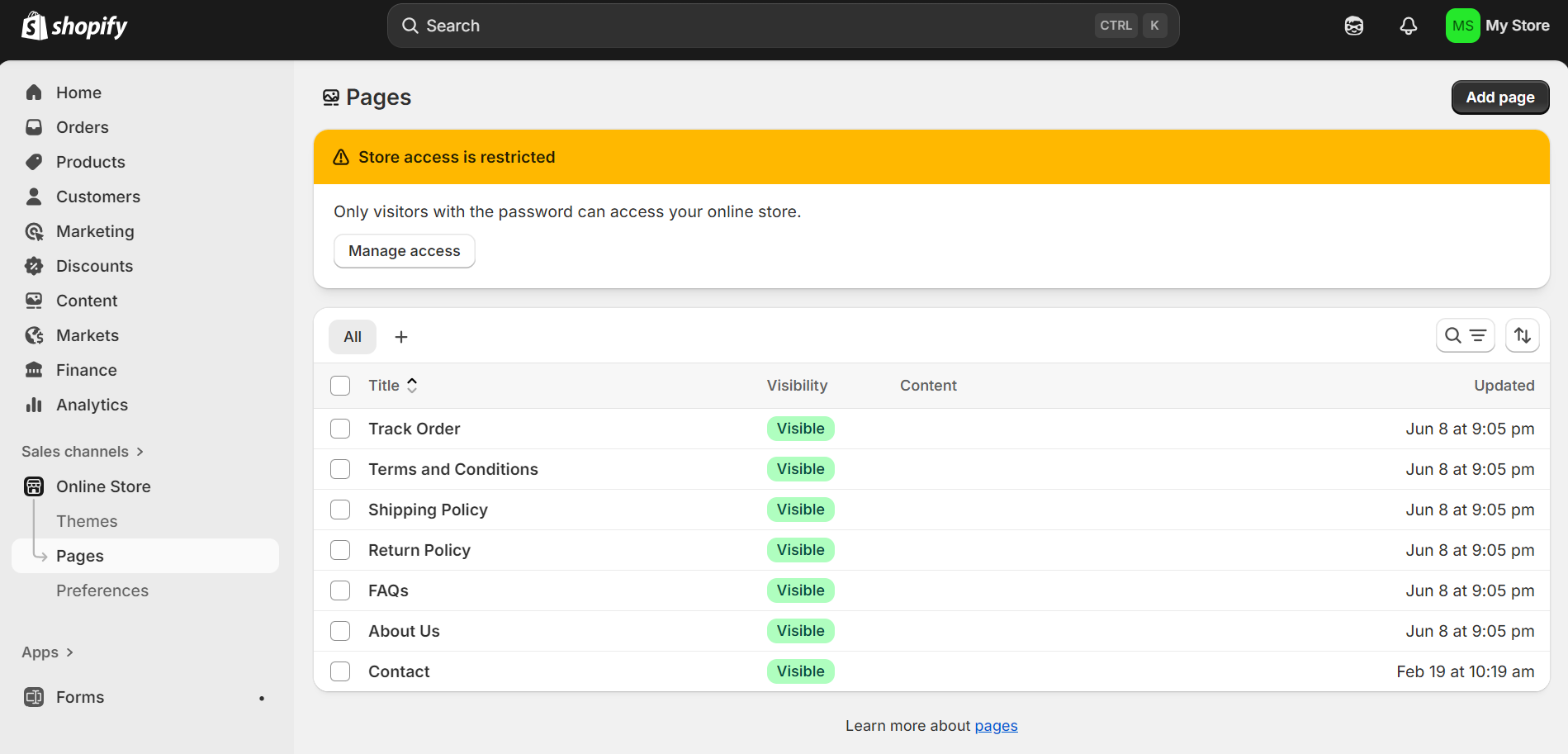
However, if you click any of these default pages, you’ll find that the content is blank. That’s because Shopify doesn’t assume what your policies and services are, so it’s up to you to add everything needed for your Shopify service business.
The image below shows the page editor:
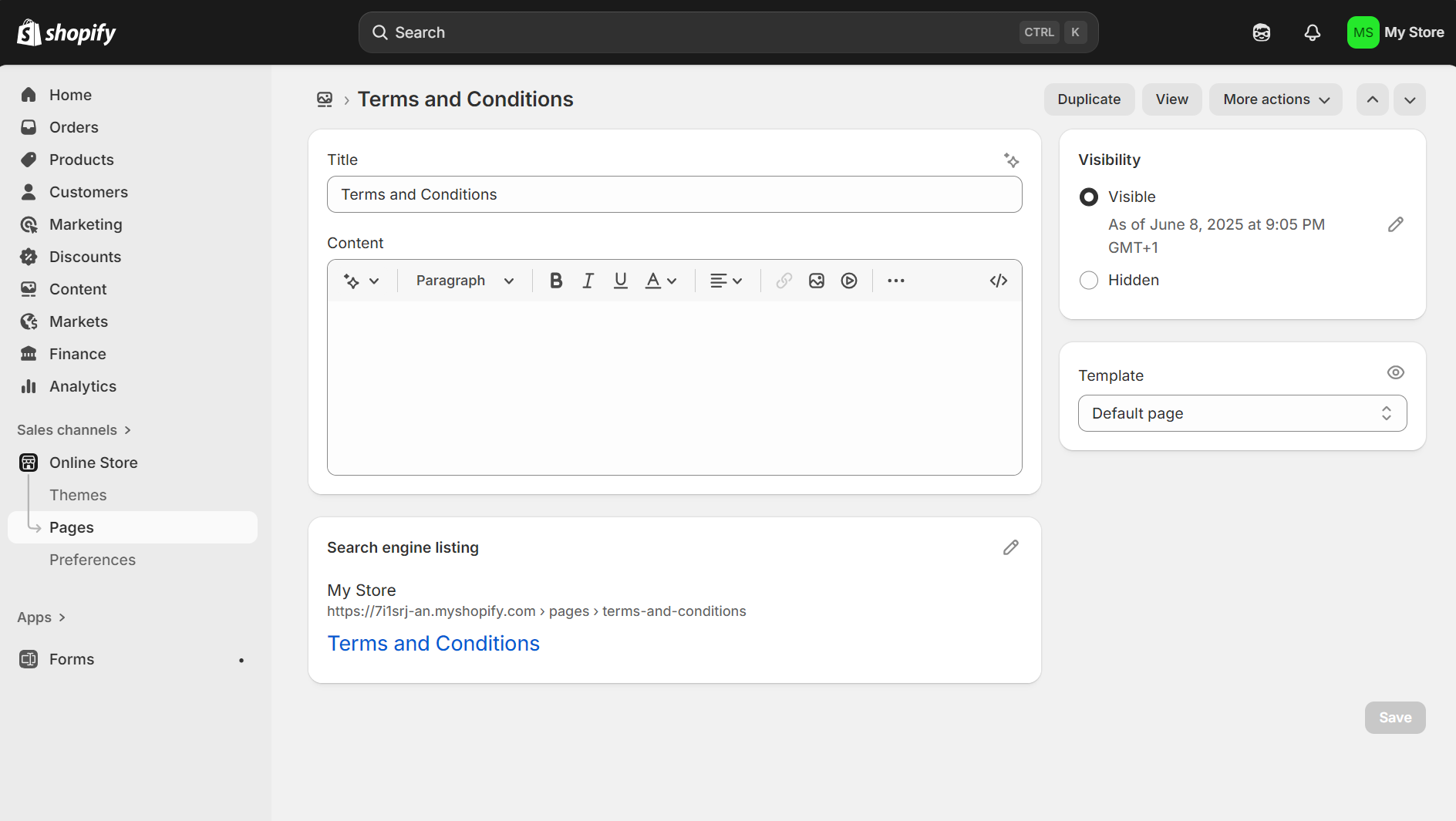
The page editor is admittedly sparse, but that’s the point. Your pages are meant to be information-rich without distractions. Add your content, click Save, and click View at the top to see a live version of your page.
If you need to add a new page, head back to Pages under Online Store and click the Add page button at the top to create it.
Since you’re using Shopify for services, you might want to create a Service delivery page and remove the Shipping and Return policy pages.
Step 5: Marketing automation setup
If you want to make serious money on Shopify, you need automations.
Shopify handles some customer notifications by default. Head to Settings > Notifications > Customer notifications and you’ll see this screen:

Its options include:
- Order processing (order confirmation, draft order invoice, shipping confirmation)
- Local pick-up (ready, picked up notification)
- Local delivery (you can deselect all these checkboxes since you’re selling services)
- Gift cards
- Store credit
- Order exceptions, including order invoice, order edited, order canceled, order payment receipt, order refund, order link
- Payments, including errors, successes, and reminders
Additional options include returns (irrelevant for services), point of sale, and accounts and outreach, such as account invites and welcome emails.
However, Shopify’s built-in notifications have limitations:
- They do not cover your complete customer journey
- They do not include marketing scenarios
- They do not allow flow-building
- The email templates aren’t branded or professional
To do all these things, you need an additional app, such as Omnisend.
Omnisend is an upgrade for your email marketing activities, providing a more intuitive third-party dashboard and new capabilities to create one-time and scheduled campaigns, multichannel automations, and segment your audience for targeting.
To start using Omnisend:
- Create a free Omnisend account
- Complete the basic setup steps in Omnisend and stay logged in
- Log in to Shopify
- Search for Omnisend in the top search bar
- Click Install on the app page
- Review, confirm installation, and connect to Omnisend in your backend
And, you’re in!
Head back to Omnisend and you’ll see your dashboard Overview:
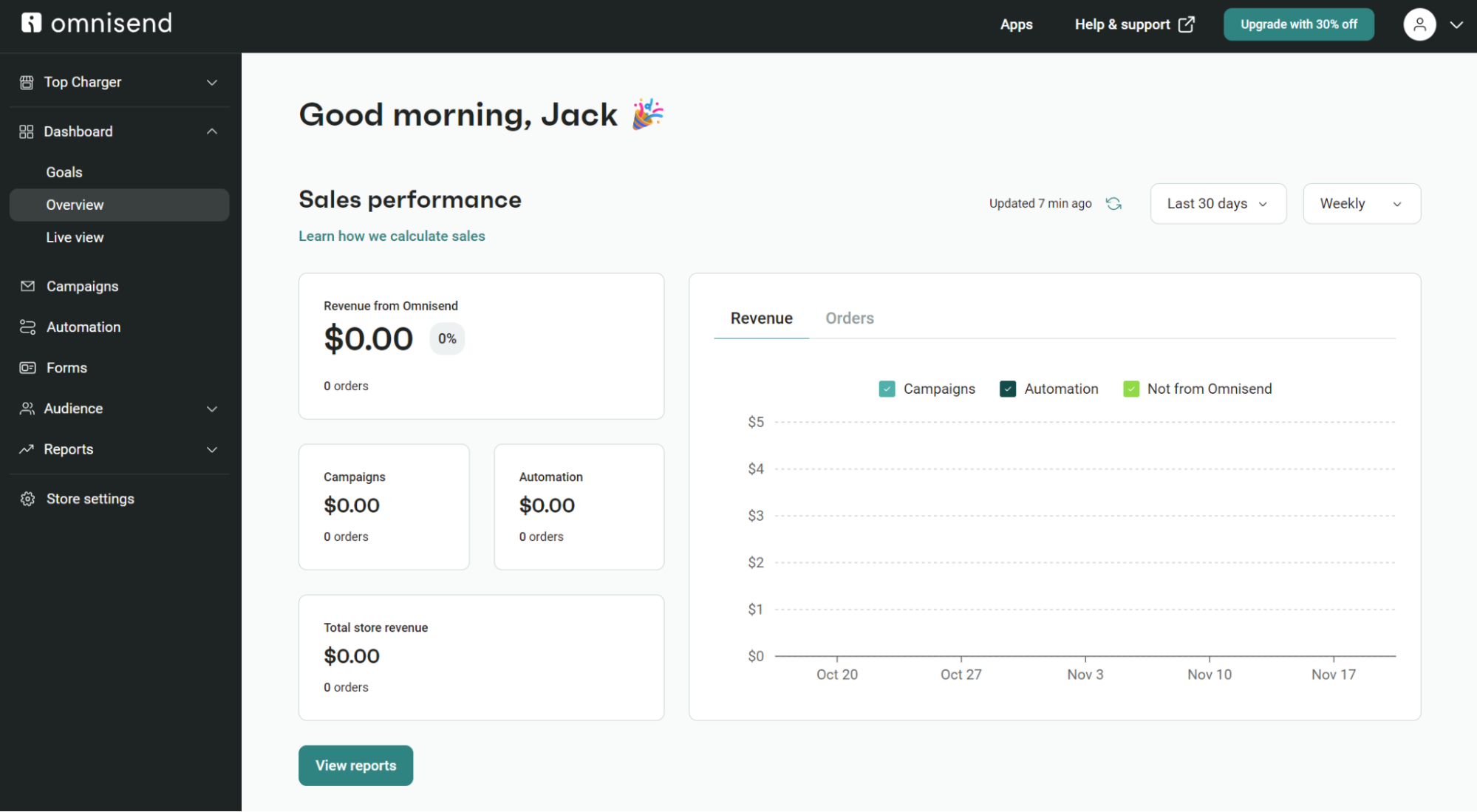
From here, you can navigate to Campaigns, Automation, or Forms in the sidebar to start building your first Omnisend element. Alternatively, you could visit Audience to import a list, view contacts, and build segments.
Starting with Automation is the logical first step for your Shopify services. Click Automation in the sidebar and then click + Create workflow to view all pre-built automations:

Click Customize workflow on any automation to open the flow builder. The image below shows the flow builder, in this case, for a Welcome series:
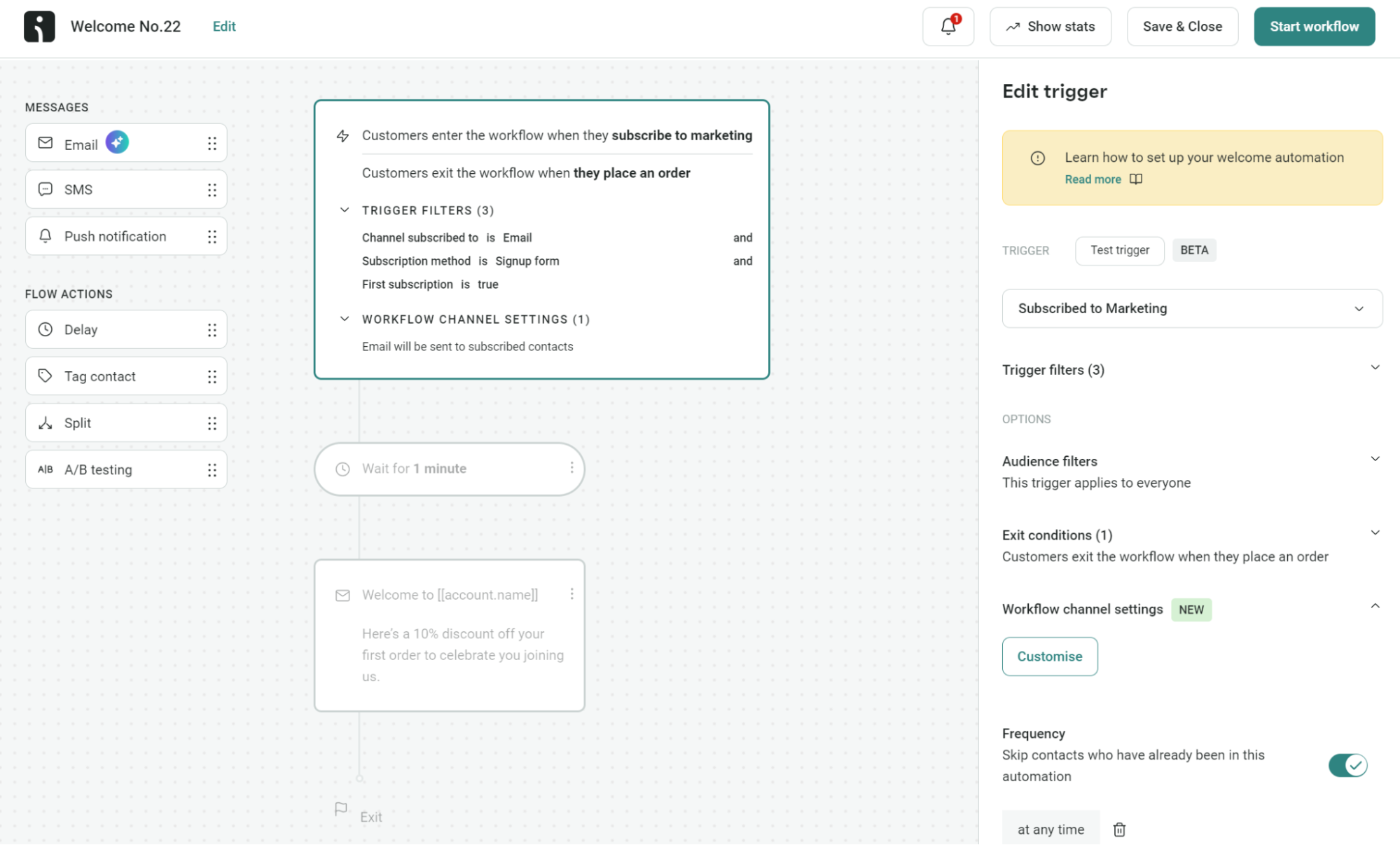
Edit the flow to suit your requirements and click Start workflow to launch it or Save & close to save it for editing later.
Overall, Omnisend provides a much more intuitive automation experience than Shopify Email, Shopify Flows, and other apps.
Which Shopify themes work best for services?
Any Shopify theme that reduces your reliance on expensive apps and can display service packages as beautifully as products is worth considering. However, you’ll need different features if you use Shopify for subscription services and bookings.
Look for these features in Shopify services themes:
- Calendars
- Reminders
- Before/after galleries
- Age verifiers
- Badges
- Collection pages
- Cross-selling
- Banners and popups
Pro tip: Themes with demos (or presets) will save you time building a professional store. Unfortunately, most free themes do not have demos. Paid themes are worth the extra cost for a professional-looking store without editing.
Here are four high-quality themes to consider:
1. Avante (Panorama version)
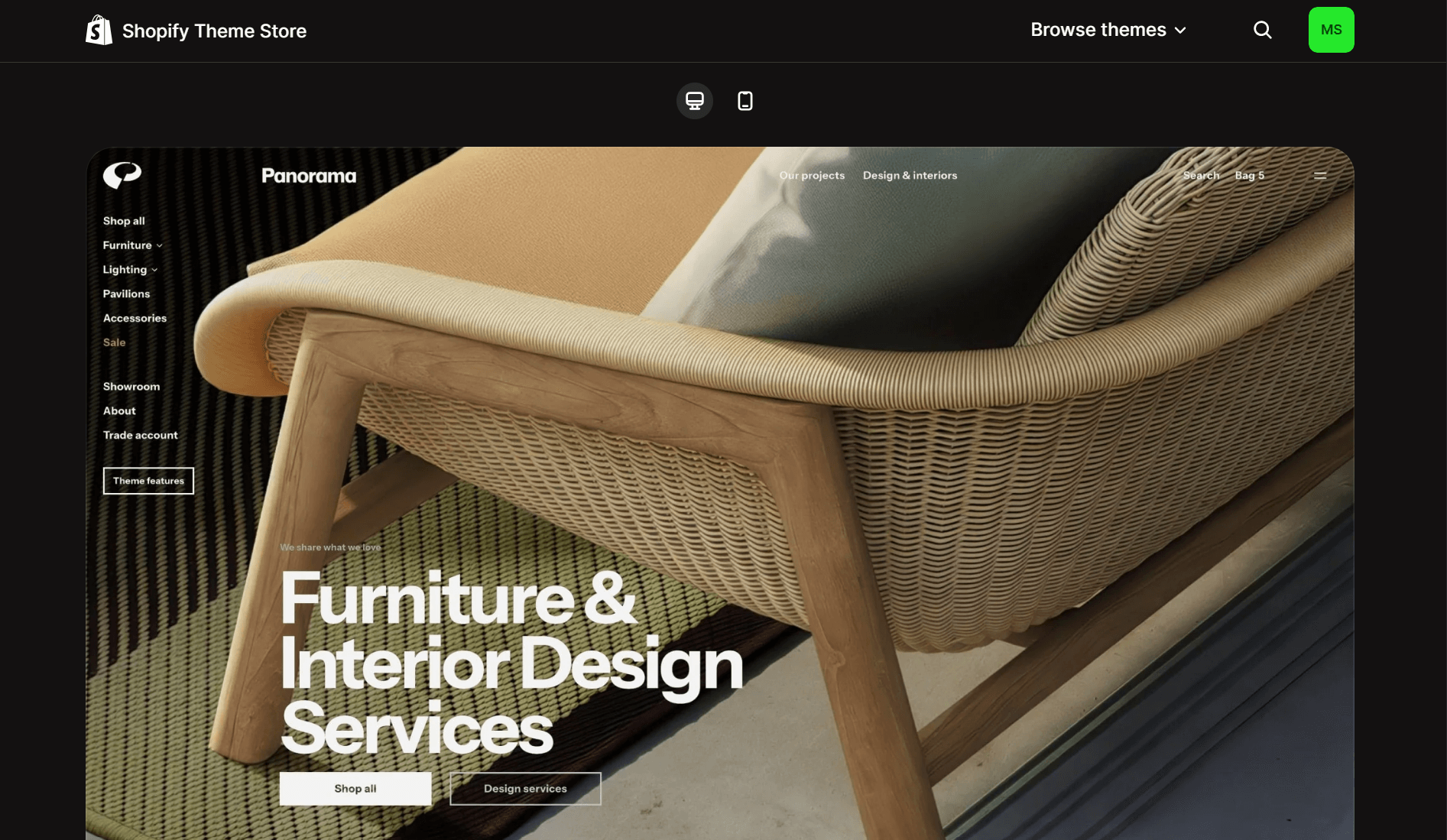
- Price: $290
The Avante Shopify theme includes the Panorama preset, a services theme demo with appointment-friendly features, including pre-order functionality, in-store pickups, customizable contact forms, FAQs, and information displays.
2. Votto

- Price: $59
Votto is a single-product Shopify theme, perfect if you intend to sell one service, subscription, or package. It includes 14+ pre-built layouts, each themed for product niches, but all you need to do is replace the content with your service offering.
3. Grove (Aircon)

- Price: $320
The Grove theme includes the Aircon preset for Shopify services, with quick order lists for packages, FAQ sections for service details, in-store pickup options that double as appointment confirmations, and promo tiles for highlighting different service packages.
4. Zeexo 4.0

- Price: $89
Zeexo 4.0 is a multipurpose Shopify theme with 113 pre-built demos and a recently added bundle template. It helps you increase sales with carousels, labels, badges, timers, and frequently bought together sections.
Good to know
All these themes are compatible with Omnisend to replace Shopify’s limited built-in email marketing features. With Omnisend, you can grow your list with forms and popups and build on-brand email flows for welcome series, abandoned carts, and confirmations.
Check out the Omnisend Shopify app.
What apps do service businesses need on Shopify?
Shopify’s default configuration is for selling products, which you can repurpose for selling services, but you’ll need apps for service subscriptions, bookings, appointments, bundles, digital deliveries, and other selling types.
The same applies to marketing automation, since Shopify only handles basic confirmations and email invoices without any SMS or push notifications.
Thankfully, Shopify’s app ecosystem spoils you for choice in all categories and provides free and paid solutions for all your service business challenges.
Here are our top recommendations:
Scheduling and booking apps
Appointo adds native scheduling popups to your Shopify service products with automated reminders, Google Calendar sync, and supports group appointments for classes or workshops.
For equipment rentals and workshops, BookX is a top choice because it treats multi-day bookings as a single block, not forcing customers to select Friday, Saturday, and Sunday (or any other days) separately like most booking apps.
If you have walk-in clients and need to take online bookings, Tipo connects to Shopify POS and provides you with real-time availability for all orders.
Digital delivery apps
For digital delivery in your Shopify service business, you’ll want BIG Digital Downloads Products for its unlimited storage and automatic email delivery after purchase, handling PDFs, videos, and license keys effortlessly.
Alternatively, Digital Downloads PDF Pendora offers instant fulfillment with customizable download limits and built-in analytics, perfect for selling courses or guides.
Marketing automation apps
Omnisend handles your email, SMS, and push notifications, letting you build one-time or scheduled campaigns and multichannel flows that trigger with segment activity and customer actions to create a complete brand experience.
The image below shows Omnisend’s flow builder, in this case for a booking confirmation:

There are pre-built flows for confirmations, reminders, and post-purchase feedback requests, plus you can build your list with popups and forms, create segments for targeting, and cross-sell and recommend services in emails to increase customer lifetime value.
Other marketing apps to consider include Dondy for WhatsApp marketing and chat, and AdRoll for serving ads on related websites/apps.
Other helpful Shopify service apps
The OrderEditing.com app lets your customers self-edit and change their service orders and provides one-click upsell opportunities in the backend.
Should your theme lack suitable demos and customization options, PageFly and Ecomposer let you build professional pages easily.
Additional reading
21 best Shopify apps for 2025
15 Shopify Plus apps to increase your sales
How do subscription services work on Shopify?
Shopify supports subscription services, helping you generate recurring revenue with specialized apps that add recurring billing features to your regular products.
Payment and checkout are still the remit of Shopify, but billing cycles, customer subscription portals, and the automations that make subscriptions work require an app.
Check out these Shopify subscriptions apps for starters:
- Subi: Provides recurring payments and memberships for services and digital products, loyalty perks and rewards, mystery boxes, and a customer portal.
- Recharge: Lets you build dynamic bundles, tiered discounts, A/B test subscriptions, and provides churn and growth tools.
- Seal: Supports magic links for customers, white-label branding for custom domains, auto-charging, and tiered subscription discounts.
These apps are suitable for online courses, monthly coaching, meetings, consulting packages, ongoing maintenance, and anything else you want to sell on subscription.
Whichever app you pick, its configuration will follow a similar process:
- Build subscription products
- Add billing frequencies
- Set any trial periods
- Add up-to-date cancellation policies
- Brand your customer portal (if relevant)
However, that isn’t the end of your customer experience because you need a way to confirm their actions, follow up, and retain them.
Omnisend is the optimal email and SMS app because it lets you create automations to cover your customer journey from initial signup to post-purchase.
For example, when customers sign up, your welcome series will introduce your brand and recommend a few subscriptions. Once a purchase is made, your confirmation sequence could include three emails over seven days:
- Your first email confirms the subscription
- On day three, your second email could provide tips
- On day seven, your third email might ask for feedback
Your next customer touchpoint could be a monthly subscription renewal email that triggers a few days before the next payment is due.
Building a professional email experience helps you improve satisfaction, loyalty, retention, and reduce customer support requests. If all you do is configure a subscription app, you’ll leave money on the table and increase churn.
How should you market your Shopify service business?
Creating your Shopify services store is half the picture. The other half is your marketing, or rather, your strategies and channels for attracting and retaining customers.
If you don’t choose the best channels, you’ll waste money and generate less revenue. The same applies even if you pick correctly, but fail to at least collect customer email addresses.
Email is the most crucial marketing channel for your service business because it lets you own your customer experience and influence their lifetime value. Starting here is the logical first step when using Shopify to sell services, given its high ROI.
Email automation fundamentals
You build email automations in an email app, such as Omnisend, and configure them to trigger when appropriate in your customer journey.
Triggers typically include segment entry/exit and event-based actions like placing orders, abandoning carts, viewing products, clicking emails, or hitting milestone dates.
There are plenty of scenarios where email is beneficial for your customer experience, and you can use Omnisend’s pre-built automation templates to cover the most common ones, including:
- Welcome
- Abandoned cart
- Abandoned checkout
- Product review
- Order confirmations
- Product abandonment
- Order follow-up
- Cross-sell
- Customer reactivation
- Replenishment reminders
Omnisend’s drag-and-drop flow builder makes it highly intuitive to edit bookings, subscriptions, one-time services, and appointments. The image below shows the flow builder, in this case for a replenishment reminder, which you can edit for rebookings:

See the options under Messages for email, SMS, and push notification? Those let you create omnichannel automations to reach customers at optimal moments.
It’s worth considering adding SMS to your flows because 90% of SMS messages are read within three minutes, making them perfect for any time-sensitive communications.
List-building and lead generation
Without a list, you can’t send emails to customers or leads. Some email addresses are automatically collected in Shopify when customers make purchases, but otherwise, you need to have newsletter signup forms and incentives that encourage email handover.
Consider building forms for these scenarios:
- Free consultation offers
- Time-sensitive discounts
- Resource downloads
- Assessment tool access
- Webinar dates
- Trials for subscriptions
Omnisend provides popup, embedded, landing page, and flyout single and multi-step form templates. Each of these can be set up for exit-intent, meaning they appear just before your customer leaves, rather than interrupting your customer’s session.
There are 120 form templates you can edit, with filtering options for goal, theme, type, and form settings. The image below shows the drag-and-drop form editor:
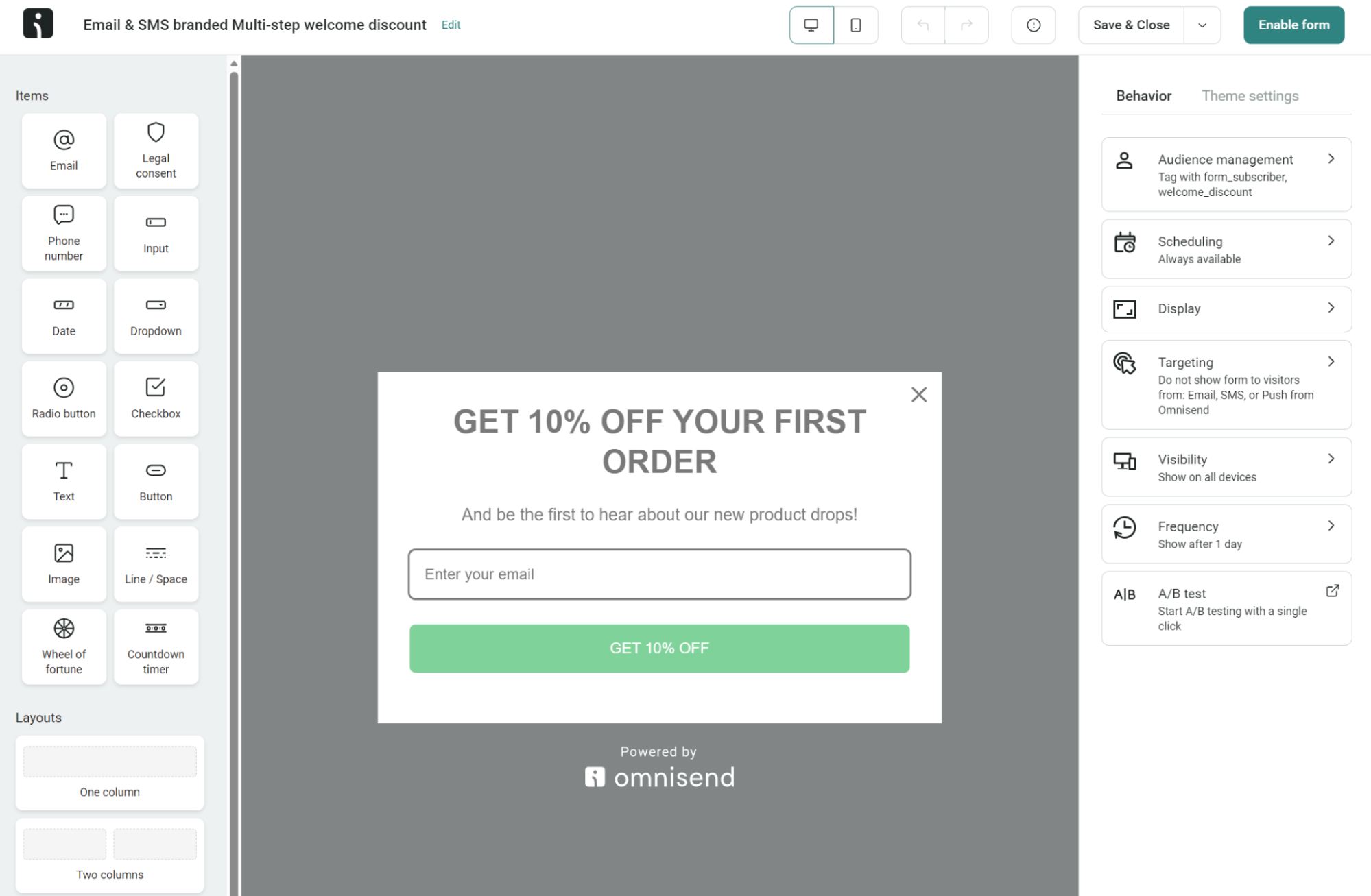
Targeting options let you show or not show forms to traffic sources, show to all visitors or only non-subscribers, show or hide the form on URLs, and use UTM targeting.
Segmentation and personalization
Segmenting your list is the next step to bring order to your contact information and target customers with contextual, personalized content.
The fastest way to segment customers is with Omnisend’s pre-built segments:
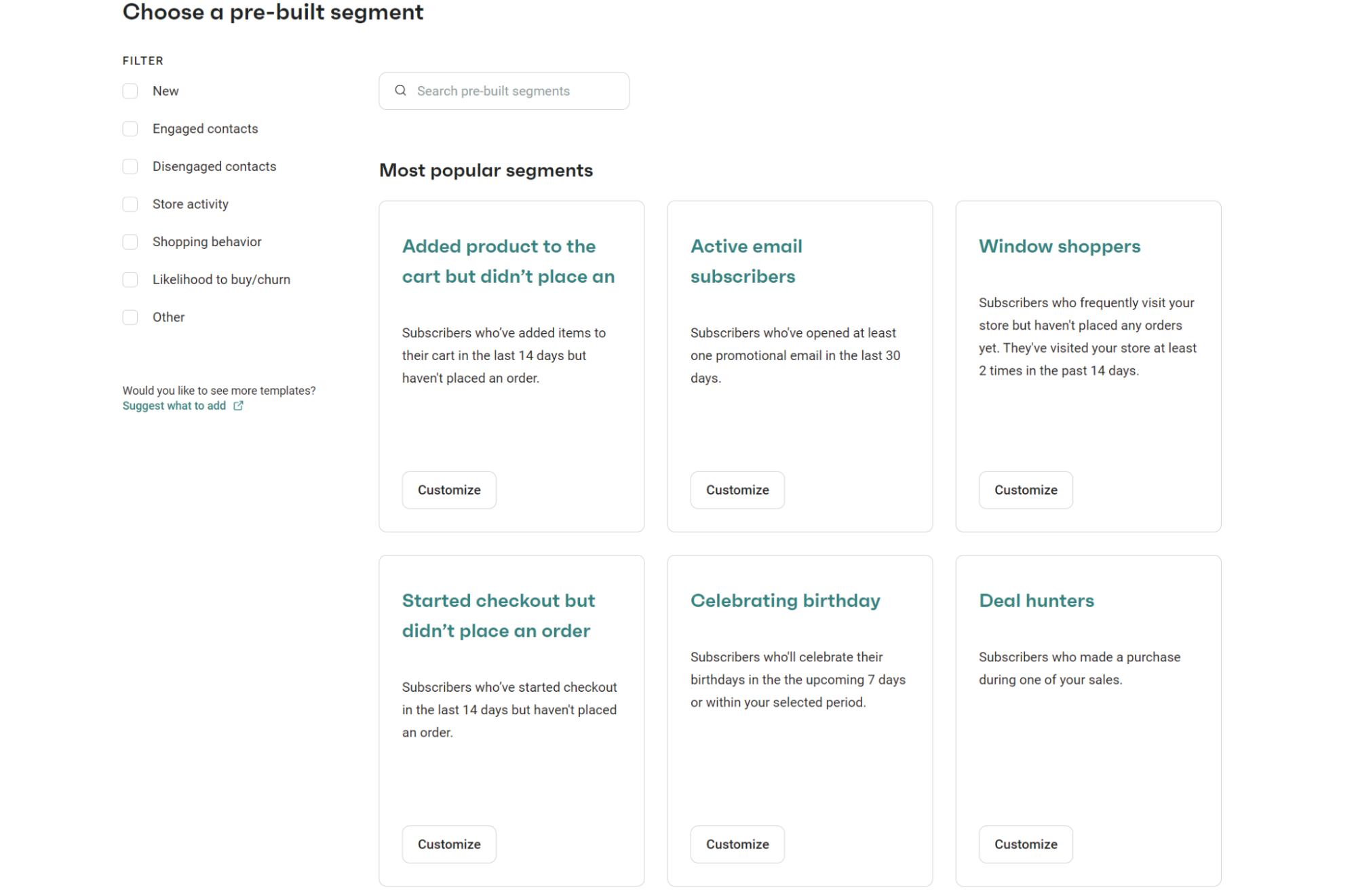
Consider segmenting your Shopify service business customers by booking date, order value, one-time and repeat customers, and passive browsers. These segments will provide the basics for separating high and low-value customers.
If pre-built segments don’t provide what you need, use the AI segment builder to describe what segment you want, and let it build it for you. The prompt below asks for a segment containing new service customers who signed up in the last 14 days in the US:

You can then click View in segment builder and start editing:

Upselling strategies
Upsells move customers closer to purchase, help them discover the most relevant services, and increase average order values.
You have two opportunities in your customer journey to upsell:
- Pre-purchase, during the consideration phase. For instance, when customers browse service one at $75/month, you recommend the $100/month service on the same page with benefits and a small discount.
- Post-purchase, during the trial and discovery phase. You’ll send upsell emails to customers recommending a higher tier or more expensive service, a tactic that works if your customers are nearing usage limits.
Omnisend helps you target both opportunities. Your pre-purchase upsells can be popups with service recommendations that trigger on your cheaper service pages, and your post-purchase upsells can be in emails and SMS for time-sensitive offers.
Social proof integration
Adding reviews, star ratings, and trust badges from platforms like Trustpilot to your emails can increase sales in emails with purchase intent.
One-time and scheduled social proof campaigns can also help to spread the word about your reputation and influence purchase behavior.
Check out the social proof email template below, built in Omnisend:
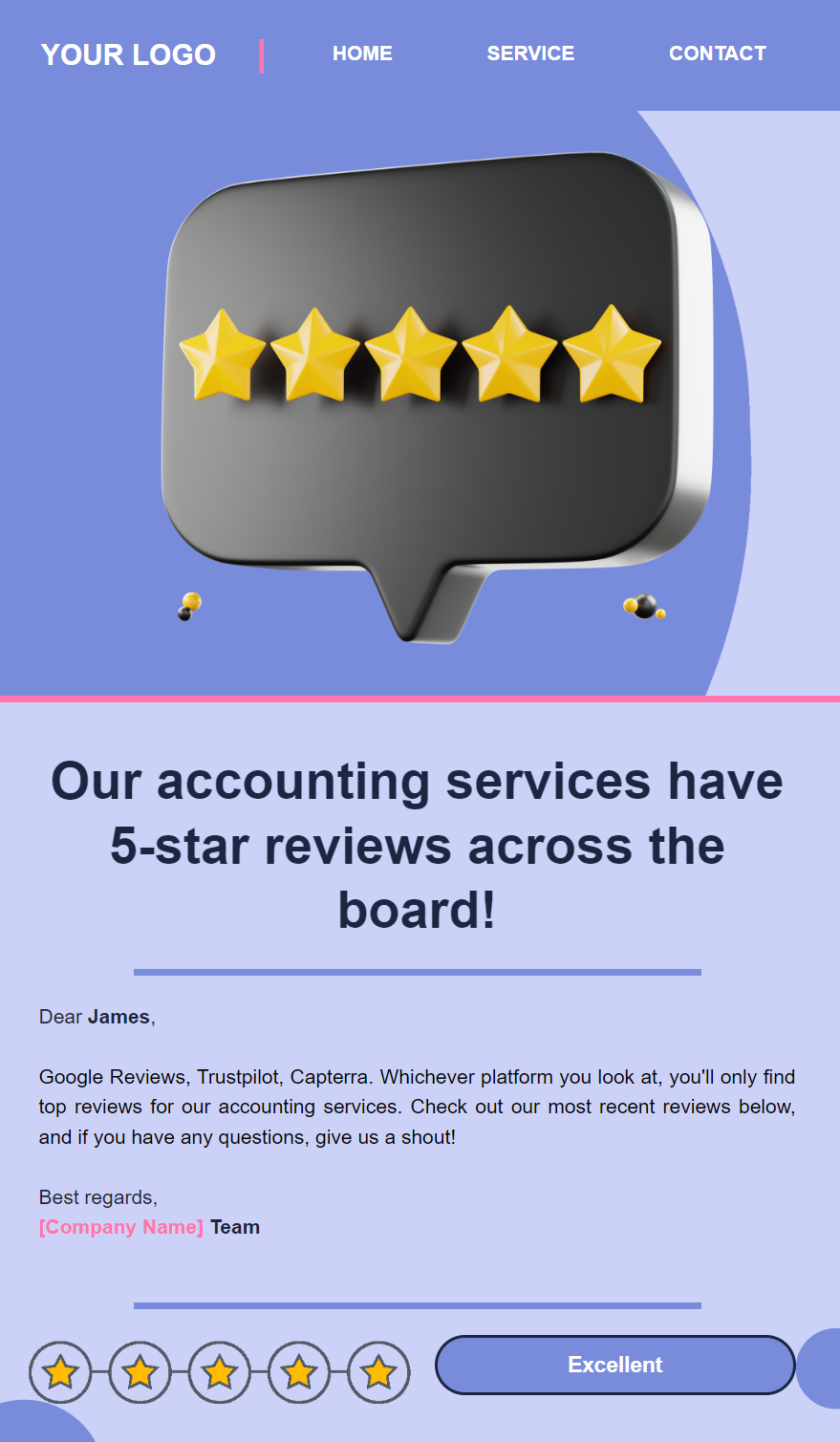
Quick sign up | No credit card required
What does Shopify cost for service businesses?
Upfront costs run $50 to $300 for any themes and custom domains you need. You’ll then pay at least $39/month for Shopify, plus a small percentage fee for any payments. That’s the bare minimum. Add premium apps, and you could easily add $50/month.
There are three categories of costs for Shopify:
- Platform cost: A monthly or annual fee from $39 to $2,300/month for the most expensive Shopify Plus plan. The plans:
- Basic: $39/month, 2.9% + 30¢ transaction fees, up to 77% shipping discount, 24/7 chat support
- Shopify: $105/month, 2.7% + 30¢ transaction fees, up to 88% shipping discount, five staff accounts
- Advanced: $399/month, 2.5% + 30¢ transaction fees, 15 staff accounts, better support, local storefronts by market
- Shopify Plus: $2,300/month (three-year term), custom rates, unlimited staff, fully customizable checkout, wholesale/B2B
- Card rates: As above. Otherwise known as transaction fees, these go directly to Shopify and range from 2.9% + $30c to 2.4% + 10c per transaction, depending on your plan.
- App subscriptions: Only relevant if you use paid apps, but you’ll probably need a premium subscription, booking, scheduling, or appointment app to sell services the way you want, plus an email marketing app for automations.
Shopify doesn’t have cheaper plans for service businesses, and so the costs can balloon, but there are several things you can do to keep expenses down:
- Picking the right Shopify plan is your most significant cost-saving opportunity. Your service business will probably get by with the $39 Basic plan, which drops to $29/month when paid annually. Save money here first.
- Shortlist your apps and review their plans for the best value. Don’t just look at what you need now, but also what you could need, so you aren’t lumped with an app that gets too expensive. For email, pick apps with usage-based pricing, such as Omnisend.
- Skip premium themes and use free Shopify themes, such as Dawn. These might be barebones, but you can always add page builders and subscription apps to create the service website you want.
- Use services with free forever plans in areas of your business that need automation, but aren’t expected to grow anytime soon. For instance, Omnisend has a free forever plan to handle your email marketing for 250 contacts and 500 emails/month.
The table below provides a Shopify pricing comparison for service-based businesses with small, medium, and large requirements:
| Business size | Solo service provider | Growing service business | Established service company |
|---|---|---|---|
| Example | Freelance consultant | Fitness studio with classes | Agency with 10+ team members |
| Shopify plan | Basic ($39/month) | Grow ($105/month) | Advanced ($399/month) |
| Theme cost | Free Dawn theme | $290 one-time | $380 one-time |
| App budget | Free to $16/month | $26-50/month | $150-200/month |
| Transaction fees | 2.9% + 30¢ per sale | 2.7% + 30¢ per sale | 2.5% + 30¢ per sale |
| Monthly total | $39 to $55 | $131 to $155 | $549 to $599 |
| Annual cost | $468 to $660 + fees | $1,572 to $1,860 + fees | $6,588 to $7,188 + fees |
| Typical monthly revenue | $5,000 | $25,000 | $100,000 |
| Est. transaction fees/month | ~$145 | ~$675 | ~$2,500 |
Note: Shopify Plus ($2,300/month) isn’t in our table because it suits enterprise service companies with complex booking needs, B2B contracts, and revenue over $800,000, not your typical service business.
Start your Shopify service business today
Shopify provides the complete infrastructure you need to sell one-time, recurring, and dynamically-priced services. Its default configuration is good for one-time offerings, and you can install apps for bookings, subscriptions, and everything else.
Compared to WordPress/WooCommerce, Shopify has better third-party apps and a lower learning curve. The same applies when comparing it to Wix, except Wix is neither as good for selling services as Shopify nor WooCommerce, so Shopify is the way to go.
Follow the setup steps in this article, and you’ll give your business the best start in life. Add the marketing tips, and you’ve a proven blueprint for success.
Quick sign up | No credit card required
FAQs about Shopify for services
Shopify works for fitness classes and consulting just as well as it does for t-shirts. You turn off inventory tracking and shipping settings, then add a booking app if you need customers to schedule appointments.
You can package your expertise into fixed offerings, such as a $500 audit or a $2,000 monthly retainer. Shopify needs defined products with prices, so if you follow that format, you’re fine.
Gambling operations and pyramid schemes are obvious no-goes, but they also block debt consolidation services and anything medical that requires prescriptions or diagnoses you can’t legally provide.
The Basic plan takes $3.20 total from your hundred bucks, the Grow plan takes $3.00, and the Advanced plan takes $2.80, which covers both their platform fee and payment processing.
Decent for sure. Digital courses and templates are delivered automatically through apps that email download links after purchase, so you’re not manually sending files or managing access to Google Drive folders.
Booking apps are essential for appointments and digital delivery apps for downloads, but everything else depends on whether you need subscriptions, contracts, or intake forms.
TABLE OF CONTENTS
TABLE OF CONTENTS


No fluff, no spam, no corporate filler. Just a friendly letter, twice a month.
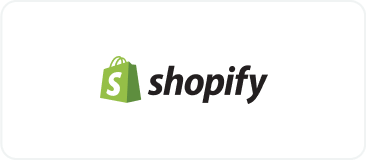
 OFFER
OFFER







